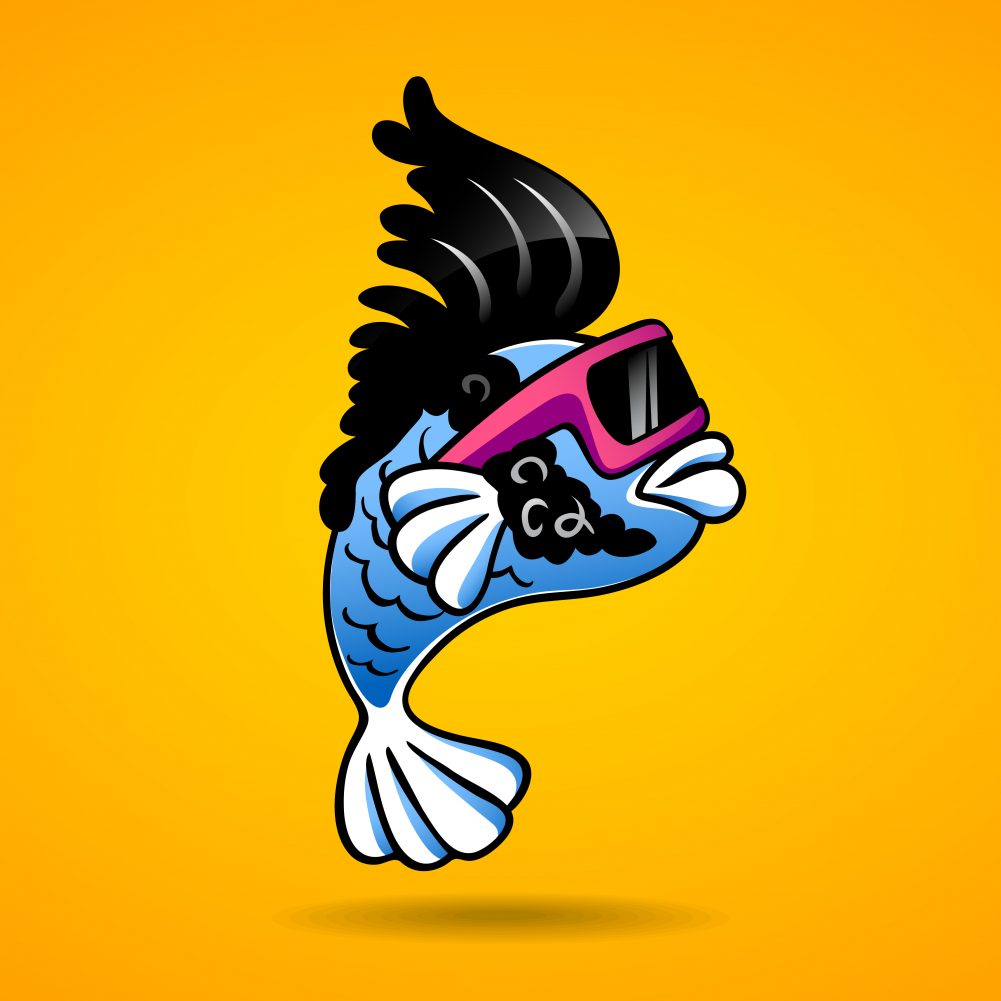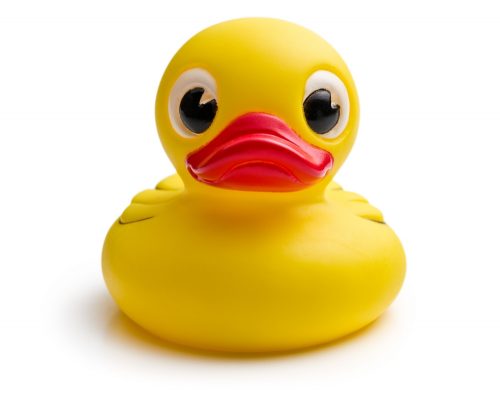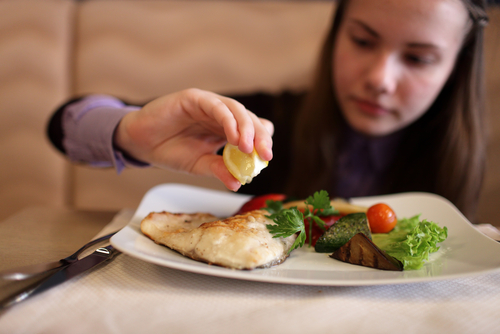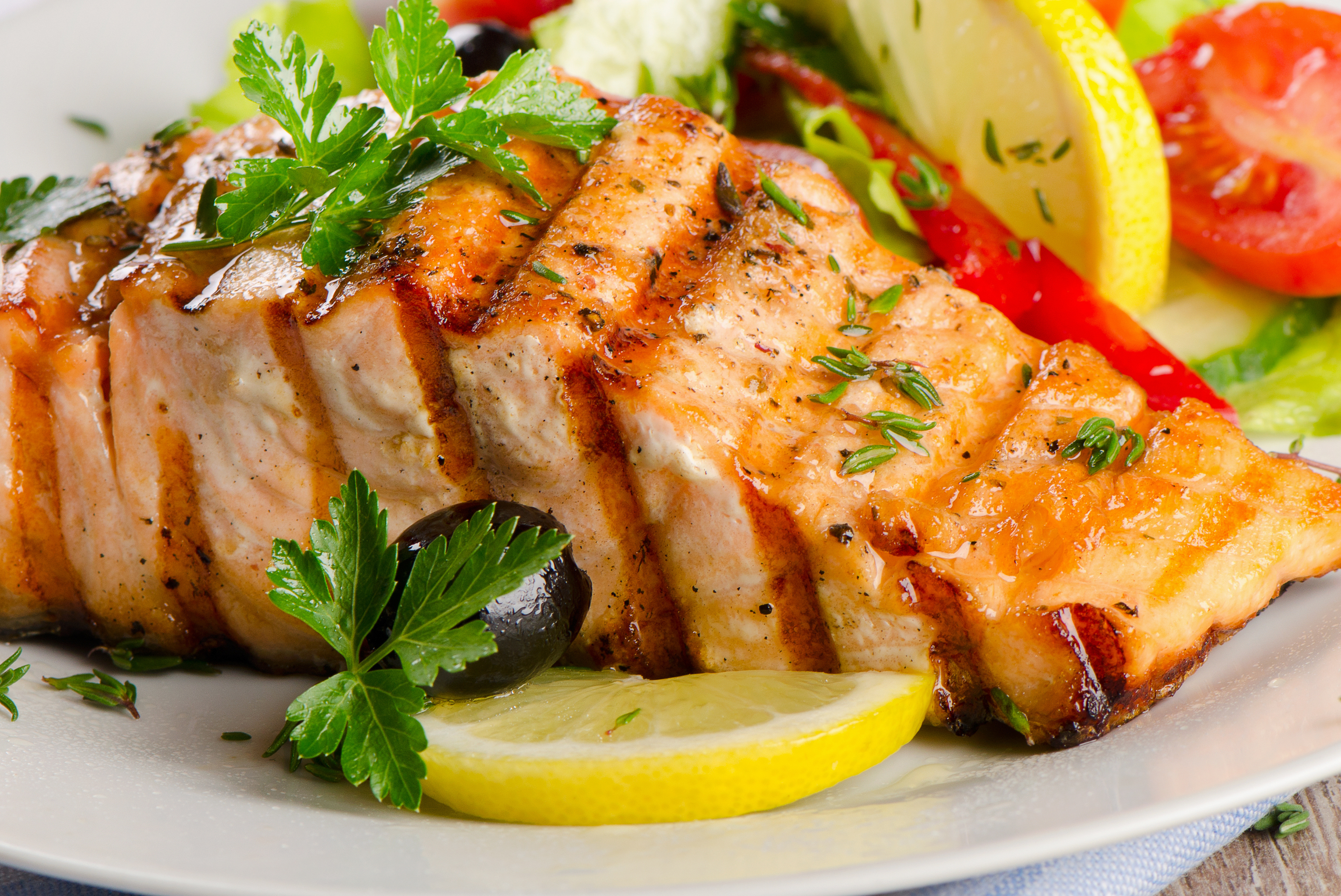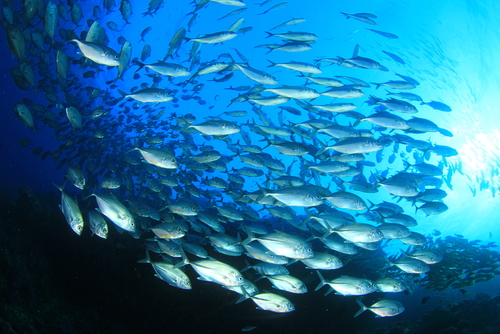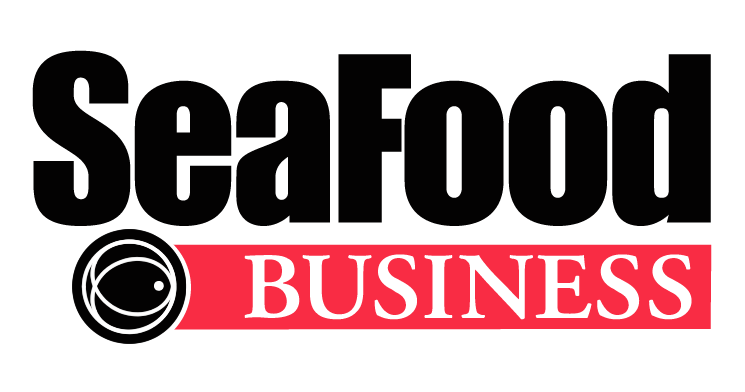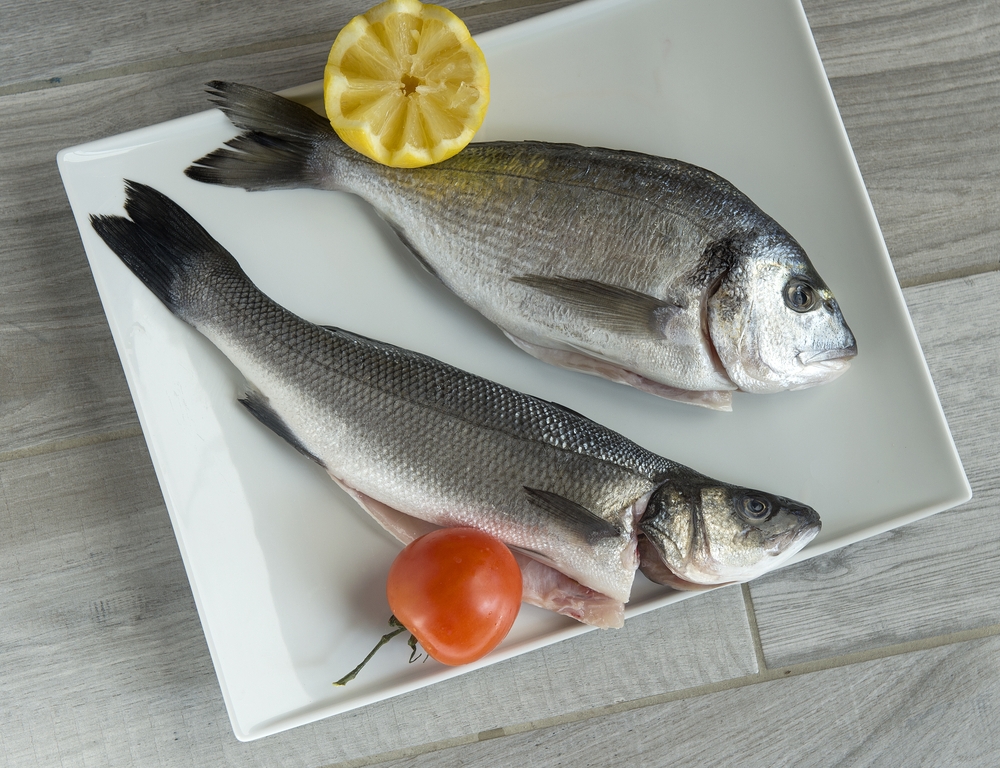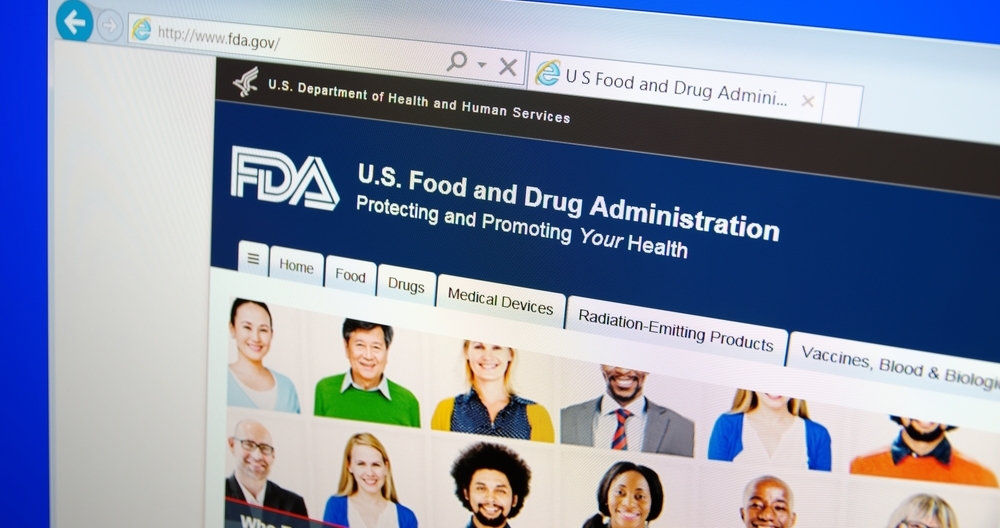All posts by NFI
Eagerly Awaiting Laura Reiley’s Next Salmon Story
When Laura Reiley, the Food Critic for the Tampa Bay Times, wrote a report titled, “The facts about farmed salmon you wish you didn’t know.” We thought it prudent to reach out to her and note some facts that perhaps she didn’t know.
We noted to her editors, that she asserts, without direct attribution or quotes that, “large salmon farms also use high levels of antibiotics.” However, nowhere does she state that, per Food and Drug Administration (FDA) regulation, unapproved antibiotics are not permitted in fish sold in the United States. In addition, nowhere does she endeavor to explain the history of introducing effective vaccines to farmed raised salmon in order to prevent the need for antibiotics.
We also pointed out that she falls for decades old hyperbole when she incorrectly claimed that farm raised salmon is dyed red. We referred her editors to Dr. Sanjay Gupta’s expose about salmon for 60 Minutes, where he notes the carotenoids that salmon normally ingest in the wild are added to their feed when they’re farmed, giving them their pink color. Saying they are “dyed” is not accurate. When she writes, “farmers add dyes to their feed” it is simply false.
We also highlighted that her implicit endorsement of wild salmon over farmed is bolstered by a section in which she suggests the feed farm raised salmon eat contributes to an undesirable omega-3 ratio. We had to make her aware that the USDA Nutrient Database lists farmed salmon as higher in omega-3s than wild. Both are safe, healthy and delicious. However, to allow one to be maligned with misinformation is an editorial failure.
In fact, with regard to the “Omega-3 versus Omega-6” subject, it is an issue that has been researched, discussed and pondered but farmed salmon is not responsibly part of that debate. According to the USDA Nutrient Database mentioned before, 4 oz. of farmed Atlantic salmon has 2433mg EPA+DHA omega-3s and 755mg linoleic acid omega-6. While 4 oz. wild Coho salmon has 1200mg EPA+DHA omega-3’s and 63mg linoleic acid omega-6.
While there is more omega-6 fat in the USDA sample of farmed salmon, there is also more omega-3 fat. Given the average American diet, if you take a fat profile that includes either 2433mg of omega-3 or 1200mg of omega-3 to a cardiologist, or any doctor, they would turn summersaults with excitement, they would not suggest the patient consume less of either fish.
Perhaps most disturbing in her article is the complete lack of perspective provided the reader about the amount of PCB’s found in farmed salmon. Nowhere is it mentioned that Harvard University research finds seafood broadly, not just farmed salmon, makes up only 9% of the PCB’s in the average American diet, while products like vegetables make up 20%. We asked the Tampa Bay Times if they planned to run a 500-word column in which Ms. Reiley suggests Americans eat fewer vegetables to avoid the PCB’s she seems so concerned about in farmed salmon? They did not respond to that question. Even after we provided the author with independent, peer-reviewed published research available in the Journal of the American Medical Association, that shows common everyday items like butter and even chicken account for far more PCBs that seafood.
- “Among adults, major dietary sources of PCBs and dioxins are beef, chicken, and pork (34% of total TEQ); dairy products (30%); vegetables (22%); fish and shellfish (9%); and eggs (5%). Dietary sources are similar for children.”
After a thorough back and forth on the issues raised in her article Ms. Reiley thanked us for our “thoughtful response” and let us know that if she feels “an additional story is merited” She would reach out to us.
We feel an additional story is merited.
Tilapia Called “Evolutionary Rock Star”
The Public Library of Science’s DNA Science Blog features a prolife of Tilapia from a PhD whose dad was a seafood wholesaler at the Fulton Fish market when she was a kid. Amid the torrent of hyperbole and downright misinformation about the fish this geneticist finds tilapia is actually an “evolutionary rock star.”
Her research leads her to write, “I can’t help but appreciate the elegant boneless and skinless white fish descended from the famed lakes of Africa.”
Pushing back against writers whose tilapia profiles are so often “panic pieces” she ultimately concludes, “I love tilapia, because it’s nutritious and has turned around my childhood fish aversion.”
It’s worth a read.
Dr. Oz Continues to Sell Snake Oil
Every day, ordinary Americans trust qualified doctors and nutritionists to give them good health and diet advice. Unfortunately, one of America’s most infamous TV doctors abuses that trust. For years, daytime television’s Dr. Oz has used his medical credentials to sell snake oil and bad dietary advice to the American public. Recently, he turned his attention to canned tuna. As always, Oz’s recommendations are a prescription for poor health.
We’re going to debunk these claims again, even though many consumers already knew not to buy into his often-inaccurate advice. As many have pointed out, Dr. Oz has put showmanship ahead of sound medical advice for nearly a decade. The British Medical Journal even analyzed his work back in 2014 and determined that more than half of his medical advice lacks proof or contradicts the best advice. But more on that later.
In a show featuring America’s Test Kitchen host Judie Collin Davidson, Oz repeats long discredited mercury myths about limiting their seafood consumption. This sort of fear mongering may keep television audiences on the edge of their seat, but there’s no scientific evidence to support Oz’s concern. His audience might be surprised to find out that there’s never been a case of mercury poisoning from the normal consumption of commercial seafood recorded in any American Medical Journal.
The truth is, canned tuna is perfectly safe and especially nutritious. Despite Dr. Oz’s baseless scare-tactics, consumer mercury content standards are already extremely rigorous. His recommendation to limit tuna consumption to 12 ounces of light tuna or 4 ounces of white tuna per week is simply not based in facts. Specifically, the FDA’s recommended limit for mercury in seafood has a ten-fold safety-factor built in. To put this in the proper perspective, the FDA’s Net Effects report, which is based on 100 peer-reviewed studies, found that a pregnant woman – let alone your average consumer – could eat tuna for breakfast, lunch, and dinner, every day of the week, without worry.
Dr. Oz’s preference for selling his audience snake oil isn’t just wrong, it may be hazardous to their health. The FDA warns that most Americans are eating dangerously low amounts of seafood. To combat this trend, the Dietary Guidelines for Americans, urge consumers to eat more fish and recommend tuna as a healthy option. The USDA also recommends that Americans eat at least 2-3 servings of seafood per week. That’s because seafood is rich in important nutrients, such as a vitamins B12 and D, iron, and beneficial omega-3s called EPA and DHA. These nutrients play a key part in heart and brain health.
Despite a wealth of scientific evidence attesting to the health benefits of canned tuna, Dr. Oz seems intent on spreading old wives’ tales. An April 2010 profile in the New York Times Magazine observed that the pressures of producing a daily television show had led Dr. Oz to dispense “a chaotic bazaar of advice, not all of it equally reliable and important.” Another article that appeared that same month in the Chicago Tribune concluded that Oz’s ventures also offer advice that’s at odds with the scientific community.
Over the years, we’ve made multiple efforts to contact him and set the record straight, and he’s ignored our efforts to demand he tell the truth about seafood. It appears that nothing- not even a formal rebuke from Congress– can stop him from giving bad advice to the American public. If Dr. Oz won’t tell the truth to American consumers, we will. It is long past time this snake oil salesman was held accountable.
“Safe Catch” tuna is here to save you… from what?
The Safe Catch tuna brand has stoked unwarranted consumer fear for years by pitching their product as containing “the lowest mercury of any brand.” The implication, without any scientific basis, is that other brands somehow represent a genuine health risk, and that this risk justifies charging families on a budget triple the price, or more, for “safe catch” canned tuna.
Indeed, the company’s very existence hinges on promoting the dangerous idea that Americans consuming a few cans of tuna a week might be at risk of mercury poisoning. Safe Catch tuna founder Sean Wittenberg claims that his own mother was poisoned by doing just that. But he presents zero evidence of any kind to support this claim. In fact, there has never been a case of mercury toxicity from the normal consumption of commercial seafood recorded in any American medical journal.
Consumer mercury content standards are already extremely rigorous. Specifically, the FDA’s recommended limit for mercury in seafood has a ten-fold safety-factor built in. The FDA’s Net Effects report, which is based on 100 peer-reviewed studies, found that even a pregnant woman could eat tuna for breakfast, lunch, and dinner, every day of the week, without worry.
How does your average can of tuna stack up by the numbers? Well, the FDA recommends eating fish that has less than 1.0 parts per million (ppm) mercury. Canned light tuna has 0.128 ppm and canned white tuna has 0.35 ppm, both far below the FDA’s threshold and any levels associated with harm.
The truth is, Safe Catch’s business model offers a solution in search of a problem. While TechCrunch is reporting that Safe Catch Tuna is “on a mission to eradicate the risk of mercury poisoning from your fish,” they are actually contributing to a nationwide public health crisis. The nutritional and medical communities all agree that Americans desperately need to eat more fish to improve cognitive function and reduce preventable cardiac deaths. Companies like Safe Catch, which exploit mercury myths in a cynical bid to improve their competitive position, will only lead to Americans eating less fish, overall, as they worry unduly about mercury exposure.
This raises serious questions about Safe Catch’s motives. The scientific consensus on mercury and seafood consumption isn’t kept under lock and key. All of this information is available via a quick Google search. So, is Safe Catch unaware of this data, or are they just accidently misleading consumers to make a buck? Neither scenario should give consumers much comfort.
‘Eat This, Not That’ knows nothing about the healthiest fish to eat
Consumers looking for information on the healthiest fish to eat, be warned: read this, not that.
Laughably, Eat This, Not That touts itself as “the definitive resource for smart nutrition,” among other claims. A quick glance at its website and you’ll realize this is not just an overstatement, it’s a joke.
NFI has addressed Eat This, Not That several times for fish falsities, yet the click bait engine continues unabashed. When did “smart nutrition” take into consideration clicks and ad-money over research and sound science?
This week’s occurrence of an Eat This error lists salmon, tilapia, and canned tuna as some of the “Unhealthiest Proteins on the Planet.” No one who’s ever been within a mile of published, peer-reviewed nutrition science could even read that allegation with a straight face.
All salmon are the healthiest fish to eat
To begin, Eat This reports that salmon is healthy only if it’s wild-caught. Is wild salmon healthy? You bet it is. But here are some real nutrition authorities that beg to differ with the suggestion that you avoid farmed salmon:
- A USDA study published in the Journal of the Academy of Nutrition and Dietetics “… showed that consuming farm-raised salmon was an excellent way to increase omega-3 fatty acids in the blood to levels that corresponded to reduced heart disease risk.”
- Dr. Sanjay Gupta participated in a 6 month expose about salmon for 60 Minutes, where he concluded there is no health difference between farmed and wild salmon. He noted the carotenoids that salmon normally ingest in the wild are added to their feed when they’re farmed, giving them their pink color. Saying they are “dyed” pink is not accurate.
Ironic Attributions
To add to the irony of Eat This’ belief that they are a legitimate nutrition resource, they attribute their claims about salmon not to a published paper, a government study, or a scientist… but instead to hyperlinks that take you back to their own misinformation. How’s that for credible sourcing?
Eat This turns to tilapia, alleging all kinds of disaster based on, you guessed it, their own articles chock-full of hyperbole. Why educate consumers about real nutrition backed by science, when you can shamelessly self-promote your own clickbait?
Lastly, Eat This states that albacore tuna can have almost triple the levels of mercury of other tuna species. Shockingly, they get close to reporting a real fact, but forget to include the rest of the context around it. According to the FDA, albacore tuna has 0.3ppm of mercury and light canned tuna has 0.1ppm of mercury. The FDA’s limit for mercury in seafood is 1.0ppm, with a ten-fold safety-factor built in. Meaning the real upper limit is 10.0ppm. To further canned tuna’s mercury content in perspective, if the FDA’s limit was a 55mph speed limit, albacore tuna is driving at 1.65 miles per hour and light canned tuna is driving at little more than half a mile per hour. Clearly, both are not even close to levels of concern and the FDA recommends eating both, even for pregnant women.
Setting the record straight
Fish contain high quality protein, copious vitamins and minerals, omega-3 fatty acids, are low in saturated fat and are associated with an array of health benefits, including a lower risk of depression, heart disease, and memory loss. Real nutrition authorities consider seafood among the healthiest foods on the planet, and encourage Americans to eat it more often.
Eat This wrongly suggests that nutritious, affordable, and accessible seafood sources like canned tuna, tilapia and farmed salmon should be avoided… when in reality they’re among the healthiest fish to eat. This isn’t an inconsequential error. Unnecessarily scaring consumers away from seafood contributes to an ongoing public health crisis that contributes to 84,000 preventable deaths each year according to Harvard University research. Keep in mind, the Dietary Guidelines for Americans 2015-2020, produced by the U.S. Department of Agriculture, recommends Americans eat at least 2 servings of seafood per week. Additionally, the American Heart Association recommends eating fish at least twice per a week. Unfortunately, research shows only 1 in 10 Americans meet the recommendation of eating seafood at least twice per week.
Real experts and authorities in the nutrition and public health space encourage Americans to eat more seafood, and educate consumers about the healthiest fish to eat. “Smart nutrition” is listening to the them, not that.
What is the Healthiest Fish to Eat? Spoiler Alert: Yes
Healthiest Fish to Eat
You probably aren’t getting enough of the healthiest fish. From boosting heart health and baby brain development to reducing the risk of heart disease and depression, eating just about any seafood at least 2 to 3 times each week has scientifically-proven health benefits. The latest Dietary Guidelines for Americans recommend that everyone—including pregnant and breastfeeding women—should increase the amount of seafood they eat to 2 to 3 servings each week for heart and brain healthy benefits.
At a time when people are told to limit many foods, seafood is among a handful of “yes” foods that Americans are encouraged to eat more of for optimal health. Yet despite seafood being a winning food, Americans just don’t eat enough. Most Americans, on average, eat about one serving of seafood every week, which means most people need to (at least) double the amount of fish and shellfish they eat to meet the recommended 2 to 3 servings each week. And, children are eating too little, as well. Consumer survey data shows 91 percent of parents with children 12 years and younger say their children aren’t eating seafood twice a week.[1]
Why It’s Important to Eat The Healthiest Fish
Seafood, which includes both fish and shellfish, tends to be low in calories and saturated fat, particularly when compared to other protein sources. Seafood is also rich in important nutrients, such as a vitamins B12 and D, iron, zinc, magnesium, phosphorous, selenium and beneficial omega-3 fatty acids, EPA and DHA.
According to the Centers for Disease Control and Prevention (CDC), heart disease is the number one cause of death in men and women in the U.S., with risk factors including diabetes, high blood cholesterol and being overweight. The good news is that eating more of the healthiest fish improves health and helps to lower these risk factors. The Dietary Guidelines for Americans recommends eating at least two servings of seafood each week to reduce the risk of heart disease. In fact, low consumption of the omega-3 fatty acids found in fish is the second biggest dietary contributor to preventable deaths in the U.S., taking a total of 84,000 lives each year. And, eating seafood just twice a week can reduce the risk of fatal heart attacks by 36 percent![2] Eating seafood provides the essential nutrients that can help protect against heart attacks, decrease blood triglyceride levels and increase HDL (good) cholesterol.
Not only does a seafood-rich diet boost heart health in expectant moms, but eating seafood 2 to 3 times every week during pregnancy can help reduce post-partum depression. Research shows that women who eat no seafood during pregnancy are twice as likely to experience depression as those who eat seafood two times a week.[3]
And, the benefits from eating adequate amounts of seafood don’t stop with mom. A diet rich in omega-3 fatty acids from seafood like salmon and tuna are essential for optimal baby brain and eye development. A recent study found that moms-to-be who ate fish 2 to 3 times each week during pregnancy had babies who reached milestones—such as imitating sounds, recognizing family members and drinking from a cup—more quickly than those whose mothers didn’t eat seafood regularly.[4] Additionally, the omega-3 fatty acids, particularly DHA and EPA, found in seafood—like tuna and salmon—make up a major part of the brain and retina. The 2015 Dietary Guidelines for Americans recommend that pregnant and breastfeeding moms eat at least 2 to 3 servings (or 8 to 12 ounces) of a variety of seafood each week to help baby’s eyes and brain develop properly.
How Much Seafood Do Americans Eat
According to recent USDA data, Americans ate about 14.5 pounds of seafood on average in 2014, which is down from 16.5 pounds in 2006. While this may sound like a lot, it averages out to less than 3.5 ounces per week, which is less than half of the recommended 8 to 12 ounces each week.
There are several reasons why most Americans eat less than the recommended amounts of seafood. The USDA survey suggests that a lack of awareness about the health benefits of seafood and lack of confidence in cooking seafood may be two factors. Additionally, other evidence suggests that the average American may not perceive themselves at-risk for health conditions stemming from an omega-3 deficiency and, therefore, are not making necessary changes to their diet. In addition, many Americans are misinformed about the safety of eating various types of fish and express a lack of confident in selecting or preparing seafood.[5]
Choosing the Healthiest Fish
Even though most Americans currently eat too little seafood, the good news is that choosing which seafood is healthiest to eat is easy. All commercially-sold seafood—meaning the fish and shellfish sold in restaurants in supermarkets—is safe to eat. While the Dietary Guidelines recommends eating a variety of seafood, the top five consumed seafood—shrimp, salmon, canned tuna, tilapia and Alaskan pollock—comprise nearly three-quarters of all seafood eaten in 2014, according to the USDA.
And for pregnant and breastfeeding women, there are only a few fish they need to avoid, such as king mackerel, shark, swordfish, tilefish, orange roughy, marlin and bigeye tuna (found in sushi). Otherwise, all other commercially-sold seafood can—and should—be enjoyed by expectant and breastfeeding mothers.
[1] Danaei G, Mozaffarian D, Taylor B, Rehm J, et al. (2009). The Preventable Causes of Death in the United States: Comparative Risk Assessment of Dietary, Lifestyle, and Metabolic Risk Factors. PLoS Med 6(4).
[2] Horn, L. V., PhD, RD., McCoin, M., MPH, RD., Kris-Etherton, P. M., PhD, RD., Burke, F., MS, RD.,Carson, J. A. S., PhD, RD., Champagne, C. M., PhD, RD., Sikand, G., MA, RD. (2008, February). The Evidence for Dietary Prevention and Treatment of Cardiovascular Disease. Journal of the American Dietetic Association, 108(2).
[3] Golding, Jean, et al. “High levels of depressive symptoms in pregnancy with low omega-3 fatty acid intake from fish.” Epidemiology 20 (2009): 598-603.
[4] The American Journal of Clinical Nutrition. Associations of maternal fish intake during pregnancy and breastfeeding duration with attainment of developmental milestones in early childhood: a study from the Danish National Birth Cohort. Available at:http://www.ajcn.org/content/88/3/789.abstract. Accessed March 5, 2012.
[5] Harrison L. (2001, November 1). Psychology Today. Eating fish during pregnancy and lactation may benefit mother and child. Available at: http: http://www.psychologytoday.com/articles/200111/eating-fish-during-pregnancy-and-lactation-may-benefit-mother-and-child. Accessed March 5, 2012.
Sustainable Fish: Scientists Say Global Tuna Stocks are Healthy
If you care about the health of our oceans, consuming sustainable fish or just want to feel good about feeding your kids an affordable, accessible source of omega-3s like canned tuna, you deserve to know whether the methods used to catch the fish on your plate are sustainable fishing practices.
A central conceit of Greenpeace’s ongoing attacks on the tuna industry is that they aren’t—that stocks are in danger of being overfished, and that efficient, modern fishing methods like purse seines and Fish Aggregating Devices (FADs) are to blame.
Sustainable Fish
But these claims have essentially no basis in reality. A recent presentation from “renowned tuna fisheries scientist” Alain Fonteneau of the French Research Institute for Development (IRP) confirms ongoing work actually makes tuna a pretty sustainable fish.
A piece in SeafoodSource.com covering the presentation ahead of the 2017 Seafood Expo Global quotes Fonteneau as concluding that even as “[f]ishing effort[s] in most tuna fisheries [have] grown steadily in recent years. . .these stocks remain in a healthy state and are much less overfished than many other coastal resources…” Fonteneau noted global tuna stocks are “very robust” and “very difficult to heavily overfish,” and that none of the world’s 21 major tuna stocks have shown signs of critical collapse.
Good News for Skipjack and Albacore
The news is especially good for skipjack and albacore, which comprise the vast majority of the canned tuna market in the United States.
Though Fontaneau couched his analysis with prudent warnings about the need for vigilance and care to ensure tuna fisheries stay healthy long-term, his conclusion was unambiguous: “There is no tuna disaster.”
At the same time Fonteneau remarked on the “heightened productivity” and “improved efficiency” of skipjack fishery, due entirely to the increase in use of FADs in recent years.
Contrast this with recent independent scientific research from the University of California demonstrating that the fishing methods Greenpeace prefers are terribly inefficient, and leave a carbon footprint orders of magnitude larger than FADs.
Greenpeace Alternatives Worse for Environment
That’s right: Greenpeace opposes modern tuna fishing on sustainability grounds, but the latest science shows that current methods are sustainable fishing techniques, and the alternative Greenpeace proposes is actually much worse for the environment.
You’d think this stunning juxtaposition would be news for anyone covering seafood sustainability, ENGOs, or both. But it hasn’t seemed to phase the activists, much less slowed down their fundraising juggernaut.
Commitment to Sustainability
The good news is there are responsible adults in the world committed to real seafood sustainability, groups like the International Seafood Sustainability Foundation (ISSF) – a globally recognized group of sustainable fisheries experts and scientists. And while Greenpeace and its allies drift farther and farther away from reality, tuna companies are committed to collaborating with ISSF and others to ensure that stocks are healthy not just today, but tomorrow and over the long term.
Reality Check
The cover story for March issue of SeaFood Business, which will be available at the IBSS, is on species substitution. In the article, Law and Order, Jamie Wright provides a recap of the Boston Globe story and subsequent Massachusetts legislature hearing. In addition, there is a lengthy interview with Wayne Hettenbach, the senior trial attorney for the Environmental Crimes Section of Department of Justice, who was involved with the recent fraud cases and an excellent summary of some of the convictions.
This story, along with the Point of View column, You’ve Been Warned, which was in the February issue of SeaFood Business, should be a reality check for everyone in the seafood supply chain. No matter where you are in the supply chain, species substitution is against the law and when caught the penalties are real.
Species Substitution in the News
Lost in all the press generated by the Boston Globe 2-part series on species substitution at Boston-area restaurants and Oceana’s report on substitution at Boston-area grocery stores is a story from another large seafood-centric city, Seattle. The local NPR affiliate (KPLU 88.5) reports on the efforts of Washington state’s Fish and Wildlife police to look for mislabeled species at area food markets.
Budget cuts and other assigned duties certainly don’t allow this to be a full-time duty of the WDFW, but seeking out fraud goes a long way to stopping the cheaters. As Officer Olson states, “Quite honestly all this stuff, it’s always about the money. It’s always about the bottom line.”
If you want a do-it-yourself guide to finding cheaters, check out this fascinating link. Professor Erica Cline with the University of Washington-Tacoma has a Catching Cheaters Salmon Market Substitution Project, complete with instructor and student lab manuals. Now that’s a useful science project.
Science to Combat Fraud (Part IV)
KGO-TV, San Francisco’s ABC affiliate, ran an excellent story about a current FDA project to supplement the global database Fish Barcode of Life. Pairing taxonomic identifications with unique DNA sequences provides the linkage necessary for regulatory actions on misidentified species. A positive story about FDA’s efforts to combat species substitution–no gotcha story here, just the facts.




